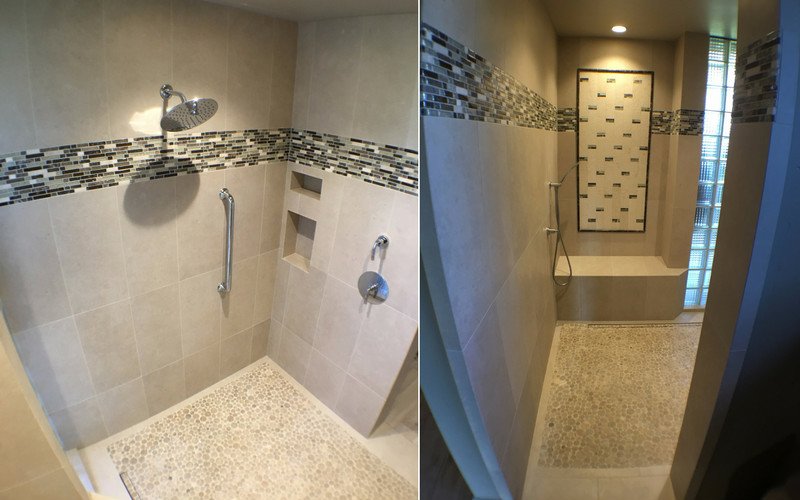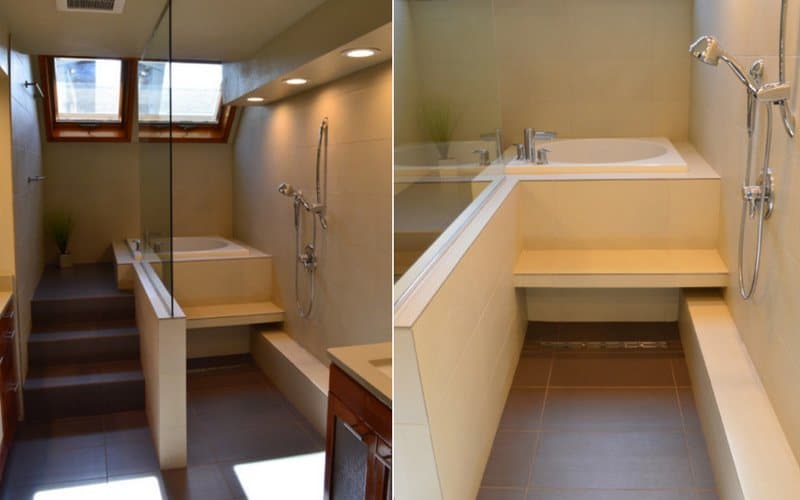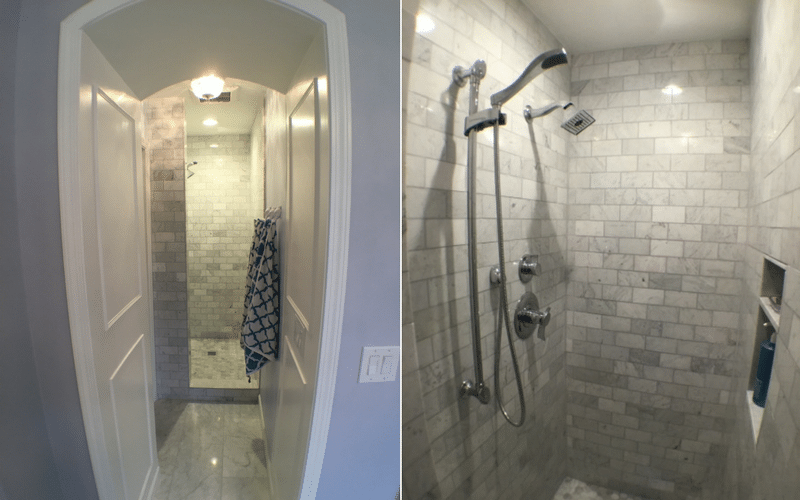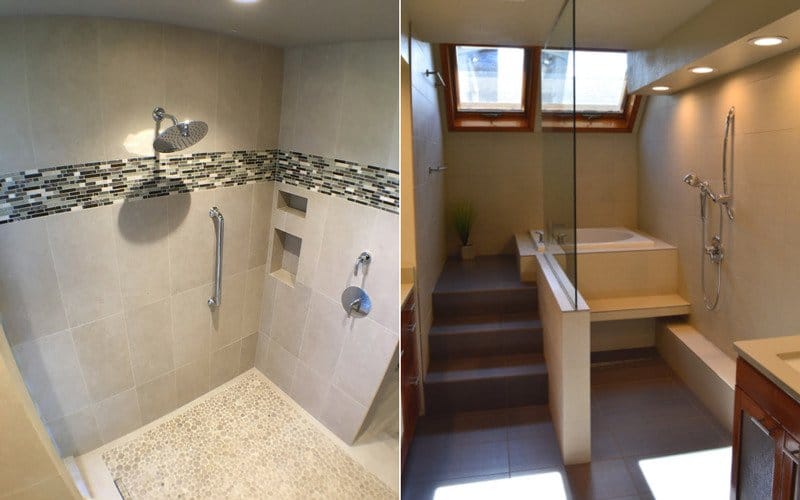Recently, the concept of the open shower has become increasingly popular. While they may seem odd to some, walk-in showers can be advantageous in a number of ways, including assisting with accessibility issues and making a bathroom seem larger than it actually is.
Below we’ll discuss a handful of the pros and cons to doorless showers—such as little privacy and escaping water and heat. While showers without doors are not for everyone, we have a hunch you’ll know whether these open concept showers are right for your home by the end of this blog.
Make Your Shower an Accessible Space

Regardless of who currently resides in your home—from toddlers to grandparents—chances are at some point or another, you or a loved one could benefit from the accessibility offered by an open shower stall. From injuries to old age, having a bathroom that employs a doorless shower means being able to heal or age in place. When you eliminate the curb on your current shower, or carry out a bathroom design without one, you open up a world of possibilities by making your shower a space for all to enjoy.
In the Open Air

An open shower stall gives you the luxury of showering in the open air, which can be especially wonderful in warmer months when you can open up windows and let the sun pour in. But these doorless showers can also make for a chillier shower experience throughout the winter season. Luckily, with bathroom design options like radiant floor heating, heated towel racks, and heat lamps, you can maintain that open-air feel while keeping your bathroom warm and cozy.
Save the Spray for Yourself

One of the main drawbacks of open-air showers can be the spraying water. Without a shower door, your entire bathroom can quickly end up soaked by the time you’re done sudsing up. Luckily, there are several ways to keep water in the shower stall, while still maintaining that open-air feel:
- Rain-style showerheads, which help cast water downward.
- Handheld showerheads, which allow you to control spray direction.
- Half-walls, which offer a division between your doorless shower and the rest of your bathroom.
- Full-walls, which still provide a doorless shower experience, but also add an additional layer of privacy.
- A graded shower floor, which helps to ensure that water flows to your shower drain.
- Additional floor and wall tile outside the shower area, which protects the surrounding region from water damage. Waterproofing the area around your shower the same way that you would the inside of the shower is especially important for showers that are both curbless and doorless.
If you are starting to think a walk in shower might be right for you, here are a few more ideas to keep in mind:
1. Remember to ensure proper drainage to guard against damage from standing water.
2. Select surfaces that hold their own against moisture, such as porcelain, glass tile, metal stone, or engineered quartz.
3. Opt for non-slippery flooring, as surfaces can become slick.

